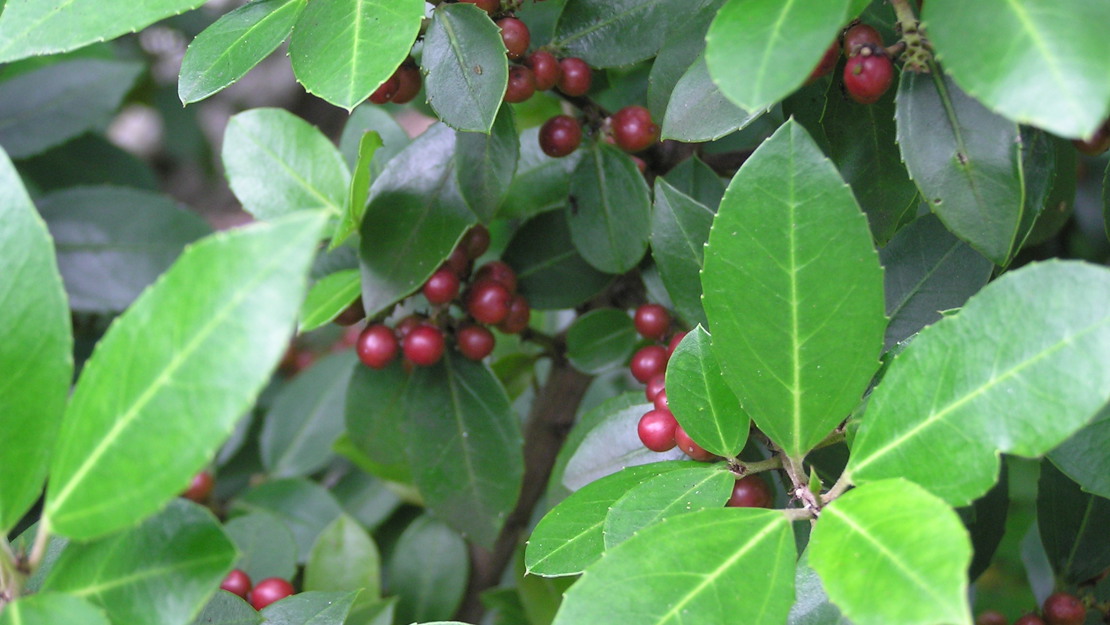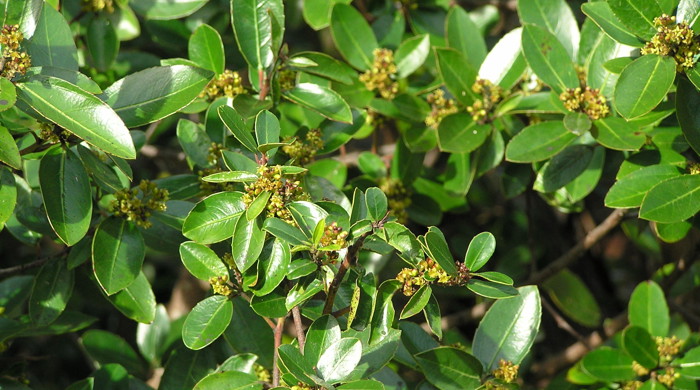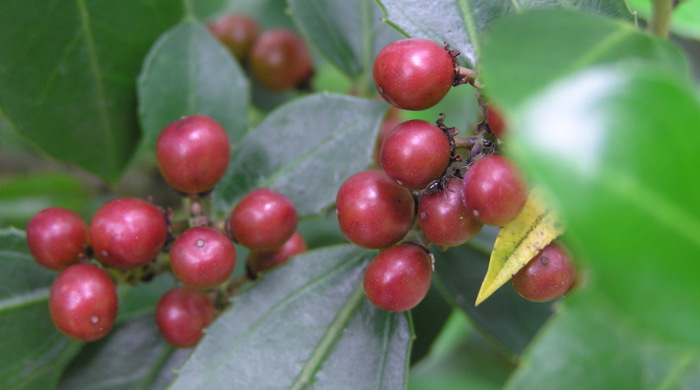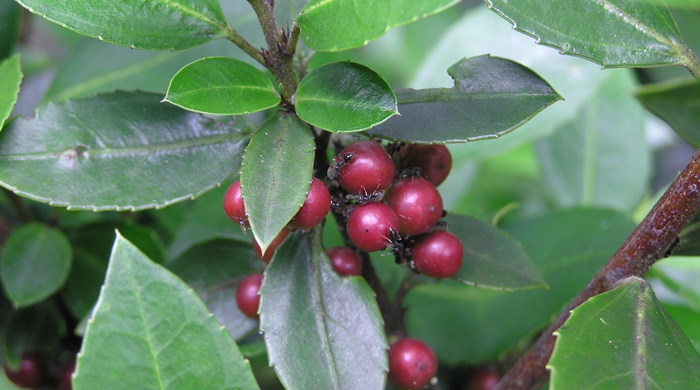Rhamnus alaternus
Rhamnus
Also known as:
Evergreen buckthorn
Family: Rhamnaceae
Origin: Mediterranean

Regional Pest Management Plan (RPMP) status
- Hauraki Gulf Controlled Area pest — Progressive containment
- Aotea — Exclusion
- Waitākere Ranges Heritage Area priority status
- Whole region — Sustained control
- National Pest Plant Accord Species
General description
Evergreen shrub < 5 m high. Shoots are angular and usually purple when young. Leaves are glossy, < 6 x 3 cm and entire or toothed. Flowers are fragrant, green and held in axillary racemes. Drupes are broad-obovoid and dark glossy red ripening to black.
What you need to know
To help protect our environment:
- You must not breed, distribute, release or sell rhamnus. As rhamnus is a National Pest Plant Accord species, these restrictions apply within the Auckland region and across the whole of New Zealand.
- You must not plant rhamnus within the Auckland region, unless you are transferring an existing plant on your land to another location within the boundaries of the same property.
- You must destroy any rhamnus on land that you occupy if it has been planted in breach of the above rules and you are directed to do so by an authorised person.
- If you identify a rhamnus infestation on land you occupy within the Hauraki Gulf Controlled Area, you must report it to Auckland Council.
- If you occupy land within the buffer area of a park where rhamnus is being managed, you must destroy all rhamnus on that land. View a map of park buffers where this applies. To find out more about how we’re protecting Auckland’s parkland from pest plants, visit our pest plant buffer pages.
If you see rhamnus anywhere on Aotea/Great Barrier Island group, please report it to Auckland Council at pestfree@aucklandcouncil.govt.nz.
Habitats
Scrublands, forest margins, coastal cliffs, rocky outcrops, plantations.
Dispersal
Seeds dispersed by birds and possibly soil movement. Human-mediated dispersal through dumping of garden waste.
Impact on environment
Forms dense stands, preventing the recruitment of native vegetation.
Control
Site Management
Follow up treated areas 3 times per year. Encourage natural regeneration of native plants or replant treated areas where possible after 2-3 treatments to establish dense ground cover and minimise reinvasion.
Recommended approaches
Physical control
Method: Dig out.
Plant parts requiring disposal: Seeds.
Disposal options: Remove to greenwaste or landfill if practical.
Biocontrol
Biocontrol is currently not available for this species.
Community agrichemical control recommendations
No qualifications: Cut stump and paste freshly cut base of stems with metsulfuron gel. Ringbark stem and paste with metsulfuron gel.
Basic Growsafe certified: Cut stump and spray freshly cut base with 5g metsulfuron-methyl per 1 L of water.
Certified Handler/Experienced agrichemical user: Drill and inject trees with 10g metsulfuron-methyl per 1L of water if safe to do so. Drill 18mm holes (tangentially angled downwards) in a spiral up the trunk.
For 50mm stems drill one hole. For 100mm stems drill two holes. For larger stems drill holes 150mm apart. Foliar spray seedlings with 5g metsulfuron-methyl per 10L of water and 20ml penetrant.
Safety notes
Large trees must not be ringbarked or drilled that are closer than 1.5 times the height of the tree from paths, walkways and property.
Trees over 4 metres in height should be removed by a qualified arborist.
Caution: When using any herbicide or pesticide please read the label thoroughly to ensure that all instructions and safety requirements are followed.







